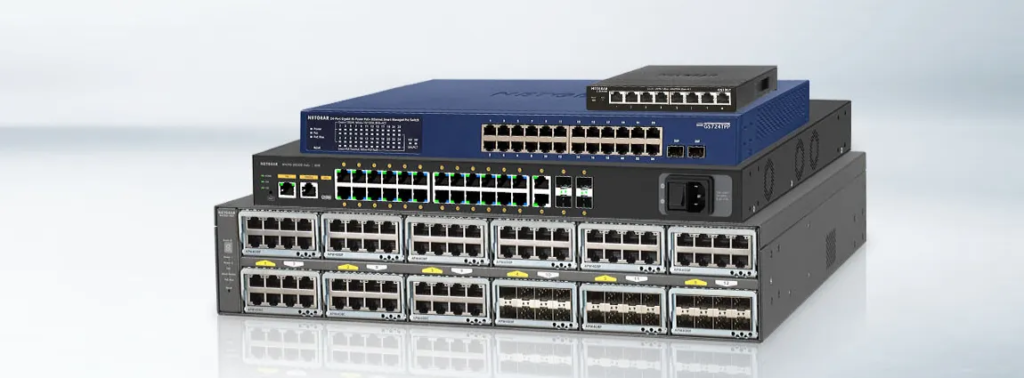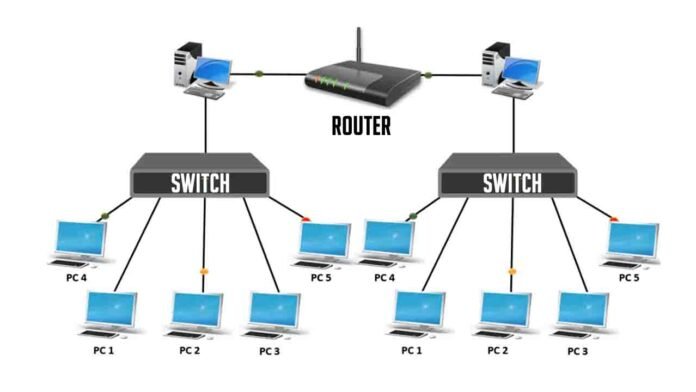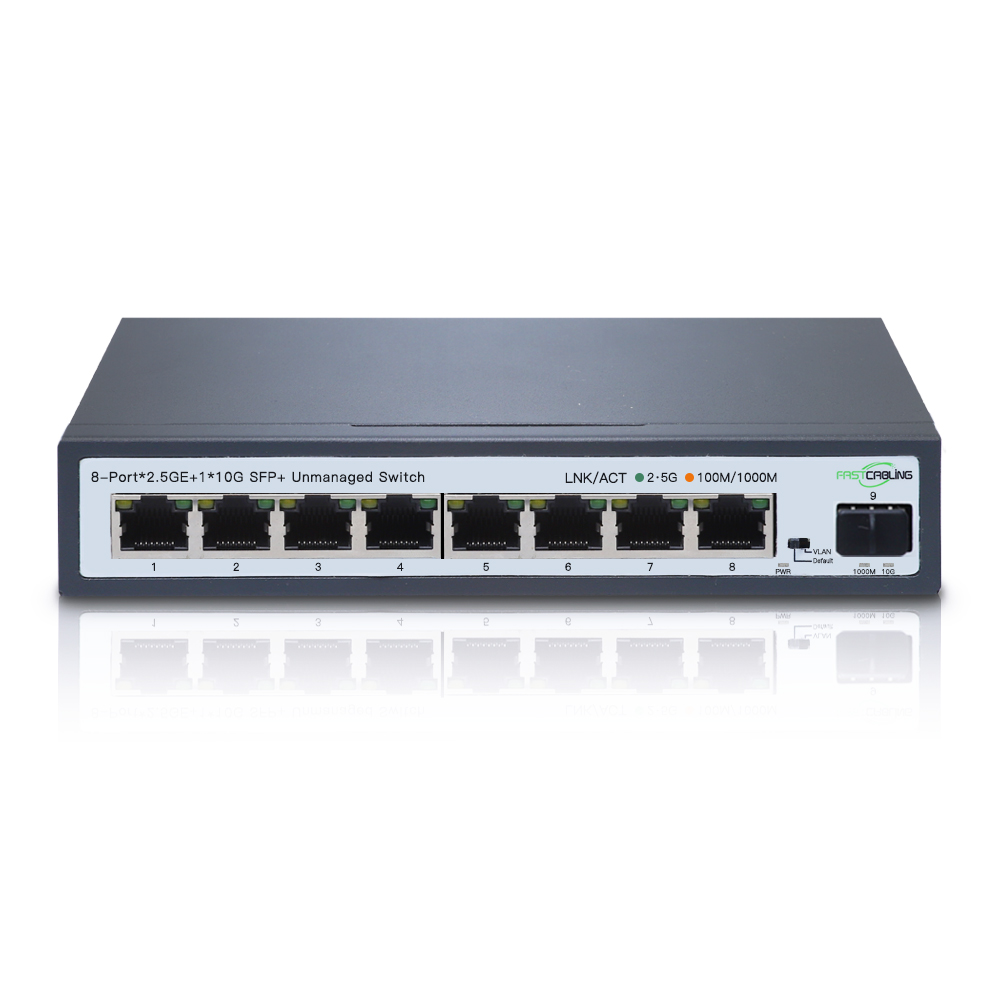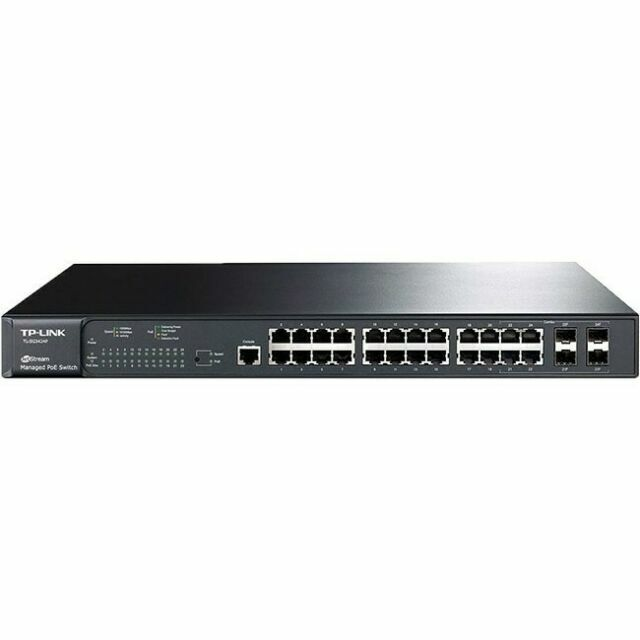Difference Between Routers & network at home or in an office, the first thing to understand is the difference between network switch vs router. Both devices are essential for network connectivity, but they are two distinct things associated with the network. This guide will help you get a better grasp of what’s different between them, how to use them, and how to select the right device for your needs.
What Is a Router?
A Router basically a networking device that allows the aggregation of multiple networks and always lays edges on the traffic flow between them. It serves as a gateway between a local network (LAN) and the internet. Assigning IP addresses to devices attached to the network, it uses these addresses to route data packets to the required destination.

Key Features of a Router:
- WAN Connectivity is that which connects a local network to the internet or another wide area network.
- IP address management: Assigns and manages IP addresses for devices using DHCP.
- Firewall and security: Often includes built-in firewall and security settings for network protection.
- Wi-Fi capabilities: Most routers also work as wireless access points for Wi-Fi networks.
Common Use Cases:
- Internet Connectivity of Home or Office Networks.
- Traffic between several networks (e.g. branch offices) management.
- Providing Secure Internet Access..
What Is a Network Switch?
Every network has a network switch, and it is used to connect many devices in the same local area network (LAN). Also, switches will not connect to the internet, since they work in a single network under a given location. Data forwarding is done by these switches using MAC address from devices.

Key Features of a Network Switch:
- Local Network Communication: This means communication between devices connected on the same LAN.
- MAC Address Routing Routing: Directs packets to the right device through a MAC address.
- Port Availability: Provides a variety of ports for device connection, such as computers, printers, and servers.
- Unmanaged and Managed: Switches are unmanaged and managed, the first showing plug-and-play functionality and the second advanced features for configuration and monitoring.
Managed & Unmanaged Switches

Unmanaged Switches:
Plug and Play Simplicity in Operating: No configuration procedures are needed to set up unmanaged switches. All you will need to do is connect the devices together and the network should be setup without any needed modifications.
Limited Features: Provides basic connectivity with a limited set of features. This means the switches are not capable of monitoring, controlling, or prioritizing traffic.
Get it at a Cost: Unmanaged switches are pocket-friendly and contribute to simple networks at homes or in small office areas.
Best For: Home, small business, or smaller spaces where you simply need a basic switch.
Managed Switches:
Additional Features: These switches will allow for significant flexibility in their configurations, ranging from traffic management to network segmentation to VLANs (Virtual LANs). They do actively hand off control of flows, prioritize traffic, and optimize route efficiencies.
Monitoring and Troubleshooting: They come with built-in tools to monitor the network performance and check for issues, so that maintenance and troubleshooting in larger networks will be much simpler and straight-forward.
Safety: Port security, Access Control Lists (ACLs), and network encryption enhancements allow some level of security in managed switches.
Scalability: Unmanaged switches cannot offer you scalability by design, which is very unfortunate as your network grows, forcing you to overhaul the entire net at some future time.
Best For: High performance, security, and management needs for business networks, enterprise environments, or data centers.
Key Differences Between Routers and Switches
| Feature | Router | Network Switch |
| Functionality | Connects multiple networks and manages traffic | Connects devices within a single network |
| Layer of Operation | Network layer (Layer 3) | Data link layer (Layer 2) or Layer 3 |
| Internet Access | Provides internet access | Does not provide internet access |
| Addressing | Uses IP addresses | Uses MAC addresses |
| Security Features | Built-in firewalls, VPN support | Limited security features |
How to Use Routers and Switches
Using a Router:
- Link your router to a modem so that you can access the Internet.
- Configure the router by changing its settings like Wi-Fi SSID, assigning a password, and changing the security options.
- Now connect that device to the router either via Ethernet or Wi-Fi.
Using a Switch:
- Connecting a switch to a router should allow the network to be extended.
- Connect devices using Ethernet cables to any port on the switch including the computer, printer, etc.
- Optionally used to configure managed switches for advanced control of the network.
How to Choose Between a Router and a Switch
When to Choose a Router:
- Your network requires an online connection.
- You need to control traffic among many networks.
- Very much Wi-Fi, VPN support, and advanced security needed.
When to Choose a Switch:
- You must increase the number of wired connections in your network.
- Your devices solely need to communicate on a local network.
- You want to enhance performance in a busy LAN environment.
Combination of Both:
Almost every network needs routers and switches. Routers act as gatekeepers for internet access and network management, while switches expand the network size and improve internal communication within the network.
Tips for Selecting the Right Device:
1. Determine your network needs: See if you want to have internet access, local communication, or both.
2. Look at port requirements: Count how many devices you will need to connect.
3. Assess performance needs: With high-performance networks, it is best to go for managed switches and feature-rich routers.
4. Budget: unmanaged switches are budget-friendly and offer value for money while managed switches might be quite costly and feature-rich routers even more.
Conclusion
Networking comprises routers and switches, where both perform different and complementary tasks. While routers enable connections between network switch vs router and allow the connection to the internet, switches provide local networking continuity. A selection will depend on requirements, network size, and affordability. Knowing what the device does and where it should be used will help you design an efficient and faultless network for your needs.






Using Jazz Cyber Shield’s routers and they’ve been fantastic! Reliable, easy to set up, and perfect for my needs. Highly recommend!
Loving Jazz Cyber Shield’s products! They describe everything about routers and switches so clearly—it made choosing the right one super easy. Great job!
Jazz Cyber Shield routers are the best! Affordable, reliable, and perfect for my needs. Highly recommend!
Just upgraded my home network with a new router and switch, and the difference is amazing Love Jazz Cyber Shield’s routers and switches! They’ve made my network faster and more reliable. Highly recommend!
Great article! 🚀 The difference between a router and a switch is often misunderstood, but this post explains it clearly. A router connects networks and manages internet traffic, while a switch efficiently directs data within a network. Businesses and home users alike can benefit from understanding these distinctions to optimize their network setup. Adding real-world use cases or performance comparisons between modern routers and managed switches could make this even more insightful. Keep up the great work, Jazz Cyber Shield!
Routers are essential devices in modern networking, allowing multiple devices to connect to the internet or a local network. They manage traffic between devices and ensure smooth communication. With advanced features like Wi-Fi, security protocols, and support for high-speed connections, routers play a critical role in maintaining a stable and secure network environment.